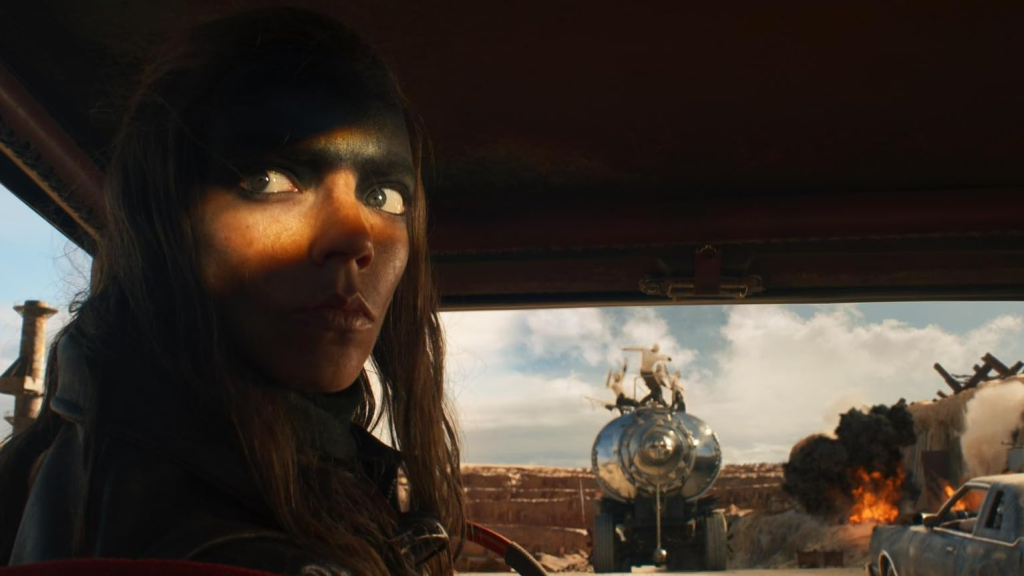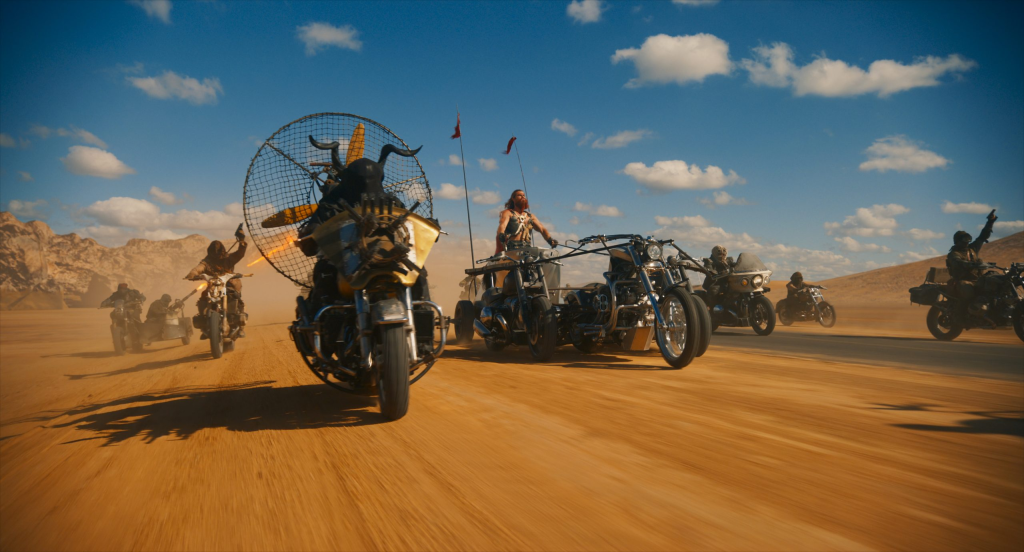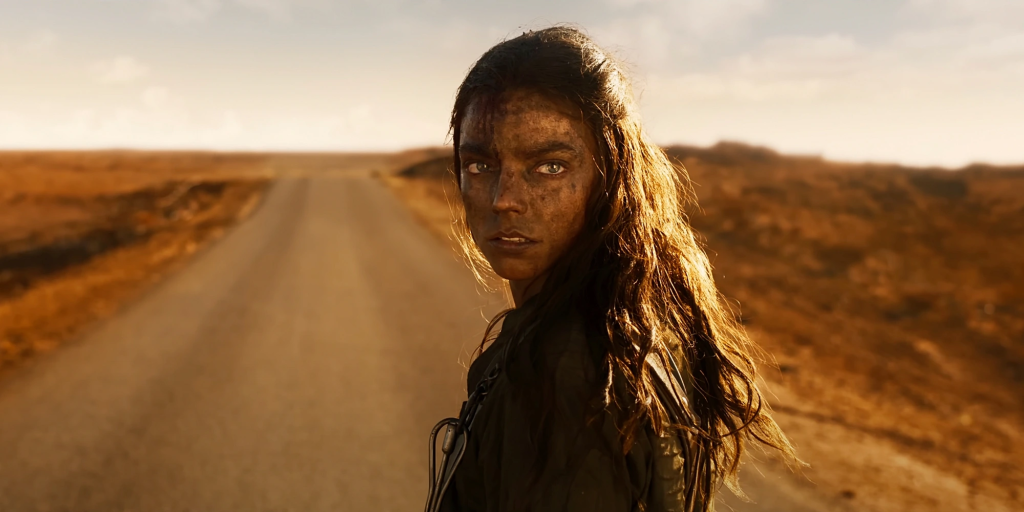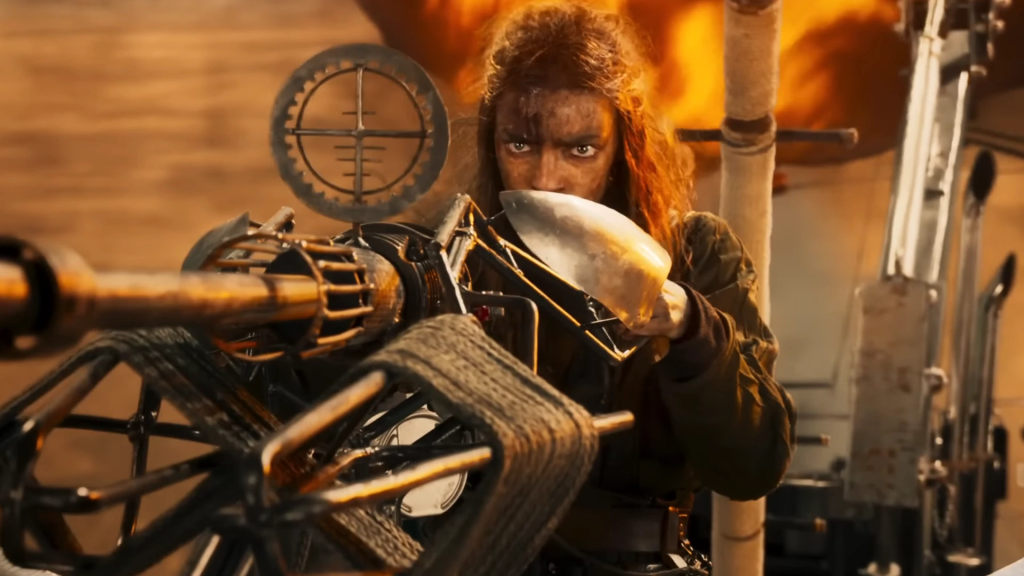The Explosive Odyssey of Furiosa: A Mad Max Saga (2024)
Imagine a world where the dust never settles, where every roar of an engine is a battle cry, and where survival hinges on grit, guile, and gasoline. Furiosa: A Mad Max Saga (2024), directed by the visionary George Miller, catapults us back into the unforgiving Wasteland of the Mad Max universe. This prequel to the Oscar-winning Mad Max: Fury Road (2015) trades the relentless chase of its predecessor for a sprawling, character-driven epic, spotlighting the origin of one of cinema’s fiercest warriors: Furiosa. With Anya Taylor-Joy stepping into the role immortalized by Charlize Theron, and Chris Hemsworth unleashing a wild, unhinged villain, the film delivers a visceral punch of action, emotion, and myth-making. Released on May 24, 2024, Furiosa roared into theaters with a $168 million budget, earning $174 million worldwide—modest by blockbuster standards, yet its critical acclaim (90% on Rotten Tomatoes) and passionate fanbase suggest a legacy that transcends box office tallies. Let’s peel back the hood of this cinematic beast and explore its roaring heart.
The Premise: A Wasteland Genesis
Furiosa: A Mad Max Saga begins in a fleeting Eden—the Green Place of Many Mothers, a lush oasis in a dying world. Here, a young Furiosa (played as a child by Alyla Browne) is snatched from her home by the biker horde led by the flamboyant warlord Dementus (Chris Hemsworth). This brutal act sets the stage for a decades-spanning tale of survival and vengeance. Swept into the desolate Wasteland, Furiosa finds herself caught between two titans: Dementus, a chaotic showman with a penchant for theatrics, and Immortan Joe (Lachy Hulme), the tyrannical ruler of the Citadel, a fortress of water and power. As these warlords clash for dominance, Furiosa’s journey becomes a relentless quest to forge her own path back to the Green Place—or at least to a semblance of justice.

The film unfolds across five chapters, each a distinct phase of Furiosa’s transformation: from a kidnapped child to a mute, resourceful survivor, and finally into the fierce warrior we meet in Fury Road. Along the way, she allies with Praetorian Jack (Tom Burke), a stoic driver who teaches her the art of the War Rig, and faces trials that strip her of innocence but steel her resolve. It’s a slower burn than Fury Road’s breakneck pace, opting for a novelistic depth that fleshes out the Wasteland’s lore and Furiosa’s indomitable spirit.
The Cast: Icons in the Dust
Anya Taylor-Joy anchors the film with a performance that’s both raw and radiant. Taking over from Charlize Theron’s iconic turn, Taylor-Joy brings a silent intensity to Furiosa, her wide-eyed expressiveness conveying volumes where words fail (she famously has fewer than 30 lines). Alyla Browne, as young Furiosa, lays the emotional groundwork, her defiance sparking the fire that Taylor-Joy fans into a blaze. Chris Hemsworth, shedding his Thor heroics, revels in Dementus—a villain who’s equal parts menacing and absurd, sporting a prosthetic nose and a manic charisma that lights up the screen.
Tom Burke’s Praetorian Jack offers a quiet counterpoint, his understated bond with Furiosa providing the film’s tender core. Lachy Hulme steps into the role of Immortan Joe (replacing the late Hugh Keays-Byrne), maintaining the character’s imposing presence while hinting at his rise to power. Supporting players like Angus Sampson and Nathan Jones reprise their Fury Road roles, grounding the prequel in familiar chaos, while newcomers like Goran D. Kleut’s Octoboss add fresh menace to the Wasteland’s roster.

The Plot: A Road Paved with Vengeance
The narrative kicks off with Furiosa’s abduction, a harrowing sequence that contrasts the Green Place’s serenity with the Wasteland’s brutality. Traded to Immortan Joe, she spends her youth disguised as a boy among his War Boys, biding her time and honing her skills. A pivotal moment comes when she joins Jack on the War Rig, a monstrous truck that becomes her classroom in combat and survival. Their partnership blossoms into a subtle, unspoken alliance—until Dementus’s forces ambush them, leaving Jack dead and Furiosa maimed, her left arm lost to the Wasteland’s cruelty.
The film’s centerpiece is a 15-minute War Rig chase, a symphony of explosions, motorbikes, and makeshift weaponry that rivals Fury Road’s best. Yet, it’s the quieter beats—Furiosa planting a seed from the Green Place, or her final confrontation with Dementus—that linger. In the climax, she traps Dementus in a fate worse than death, tethering him to a tree grown from that seed—a poetic twist that ties her revenge to her lost home. The epilogue nods to Fury Road, with a cameo of Max Rockatansky (uncredited) hinting at their future meeting.
The Themes: Survival, Myth, and Memory
Furiosa wrestles with heavy questions: What does it mean to endure in a world that’s already ended? Furiosa’s journey is less about reclaiming the Green Place than forging a legacy amid ruin. The film mythologizes her, casting her as a Wasteland avenger whose scars tell a story of resilience. Her relationship with Jack explores trust in a land of betrayal, while her vendetta against Dementus probes the cost of vengeance—does it liberate or consume? Miller layers these themes with biblical undertones, from the Green Place as a lost Eden to Dementus as a fallen prophet, creating a saga that’s as philosophical as it is ferocious.

Visually, the Wasteland’s orange sands and rusted machines contrast with the Green Place’s fleeting green, a reminder of what’s been lost. The film’s politics—water and gas as currencies of power—double as an allegory for unchecked greed, a thread running through Miller’s Mad Max tapestry.
The Craft: Miller’s Mad Genius
George Miller, at 79, proves he’s still a maestro of mayhem. With cinematographer Simon Duggan, he crafts a Wasteland that’s both sprawling and intimate, from sweeping desert vistas to claustrophobic close-ups. The action—choreographed with stunt legend Guy Norris and enhanced by VFX—feels tangible despite its scale, thanks to practical effects and Miller’s meticulous planning. Editor Margaret Sixel (Miller’s wife) weaves the chapters into a cohesive epic, though some critics note a midsection sag. Tom Holkenborg’s score thunders with industrial beats, amplifying the film’s pulse.
Furiosa isn’t flawless—its runtime (148 minutes) occasionally drags, and the CGI can’t always match Fury Road’s tactile grit. Yet, its ambition and execution mark it as a bold reinvention of the franchise, trading speed for scope.

Why It Resonates: A Prequel with Purpose
Unlike many prequels, Furiosa doesn’t just fill gaps—it enriches Fury Road. It transforms Furiosa from a stoic rebel into a tragic hero, her losses amplifying her later triumphs. While it didn’t replicate Fury Road’s cultural quake, its streaming success on platforms like Max and Netflix suggests a second life among fans. It’s a testament to Miller’s knack for evolving his dystopia, proving there’s still gas in the Mad Max tank.

Final Verdict: A Wild Ride Worth Taking
Is Furiosa: A Mad Max Saga as electrifying as Fury Road? Not quite—its slower tempo and denser narrative won’t thrill everyone. But as a bold, beautiful descent into the Wasteland’s soul, it’s a triumph. Taylor-Joy and Hemsworth ignite the screen, and Miller’s vision remains unmatched. Strap in and witness it.
Thank You and Keep Rolling!
Thanks for riding shotgun through this exploration of Furiosa: A Mad Max Saga (2024)! I hope you enjoyed the journey as much as I did breaking it down. Craving more cinematic adventures? Stick around—there’s plenty more to discover, from dystopian epics to hidden gems. What’s your take on Furiosa’s saga? Share your thoughts, and let’s keep the engines revving!
